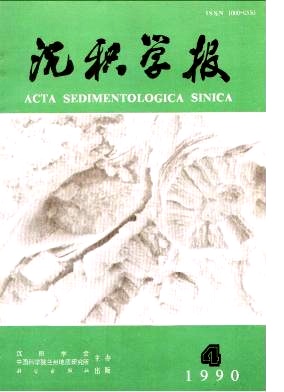DEVONIAN SEDIMENTARY ENVIRONMENTS AND BASIN EVOLUTION IN ZHASHUI-ZHENAN DISTRICT, EASTEPN QINLINC CHIAN
- Received Date: 1988-07-26
- Publish Date: 1990-12-10
Abstract: The Devonian sedimentary basin of the Zhashui-Zhanhan district in southern Shaanxi Province shows well developed alluvial fan, braided stream, estuarine, tidal flat, platform margin sands, point reef, slope and basin facies. A mixed terrigeneous clastic-carbonate succession mainly comprises an intercalation of carbonate platform facies with slope-basin and basinal turbidites of very great thickness. The basin shows the following features: (1) Turbidite mineral compositions fall into the passive margin and rift basin field of Valoni & Maynard' s QLF figure. (2) The sedimentary succession shows rapid and complex facies variation. (3) From east to west, facies vary from shallow to deep marine indicating that the main trend of the basin is N-S. (4) There are major abrupt facies changes between three large faults in the basin. These show right lateral slip and indicate eastward basin migration. (5) The sedimentary association of the basin shows the characteristics of continental margin rift basins. (6) Volcanic rocks are of the sub-alkaline and alkaline series. (7) The structure of the basin comprises a series of south trending thrust or reverse faults, with the intervening blocks showing complex east- west trending tight folds. Overall, the sedimentary basin is a continental margin rift depression shpwing elongate N-S orientation, and right lateral strike slip faulting. The basin developed on the northern margin of the Yangtze plate, which underwent extensional crustal thinning. The stages of basin evolution are as follows: (1) Primary stage (Z2-S) ——pre-rift arch to intracontinental rift. Mantle upwelling caused thinning of the Yangtze plate margin crust. Alkaline volcanism occurred along major faults. In the early Palaezoic, there was great lateral variation in sedimentation, with areas of differential uplift and subsidence. (2) Intensive spreading middle stage (D1-D3) ——continental rifting to faulted basin developerrient. In the early part of this stage, spreading led to large scale block subsidence, aulacogen formation, and right lateral strike slipping. The basin was filled with a great thickness of flysch, with some intercalated pyroclastics. In the later part of the stage, the Yangtze and North China plates began to move together, with continental collision taking place locally in the middle Devonian. (3) The inversion stage (C-T2)——intracontinental subduction and uplift. In this late stage, from Carboniferous to middle Triassic, the basin showed little change in sedimentary pattern, with a suite of shallow marine limestones, mudstones and sandy mudstone facies being developed. Following the middle Triassic, basin closure occurred as a result of purely intracontinental, shallow coastal deformation along a large decollement with about 120km of horizontal transport. Intracontinental subduction resulted in compression of the sedimentary basin into the east-west trending Qinling belt.
| Citation: | Liu Baojun, Xu Xiaosong, Xu Qiang, Yan Zhihua. DEVONIAN SEDIMENTARY ENVIRONMENTS AND BASIN EVOLUTION IN ZHASHUI-ZHENAN DISTRICT, EASTEPN QINLINC CHIAN[J]. Acta Sedimentologica Sinica, 1990, 8(4): 1-12. |






 DownLoad:
DownLoad: